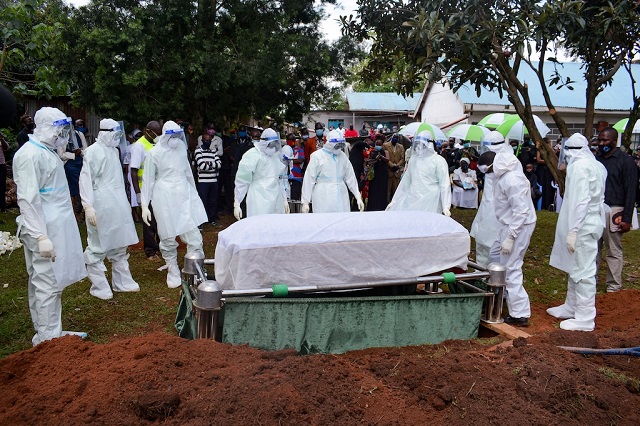
Kampala, Uganda | THE INDEPENDENT | At least 65 percent of all Covid-19 deaths in Uganda occurred during the recent campaign season. This accounts for 215 out of the 327 deaths recorded in the country since the outbreak of the coronavirus disease almost a year ago.
The deaths occurred between November 2020 and January 2021, a period that was characterized by heated political activities and gatherings across the country. According to records by the Ministry of Health, November recorded the highest number of fatalities with a total of 94. There were 47 deaths in December and 74 in January.
Among the dead was Pallisa Woman MP Faith Alupo, Kamuli Woman MP Rehema Watongola, Kyotera Woman MP Robinah Ssentongo, her husband Joseph Ssentongo, her sister Dorothy Mukasa, Alhajji Ali Kirunda Kivejinja, Dr Wilberforce Kisamba Mugerwa, Dr Charles Kiggundu, Dr Fred Kigozi, Dr Gelasius Mukasa, and Dr Patrick Odongo, among others.
Dr Misaki Wayengera, an epidemiologist and the head of the Covid-19 scientific committee says that the trend of deaths during the campaign season was not unexpected considering that many of the people involved in political activities disregarded precautions about Covid-19 and continued meeting in crowded places, holding campaign meetings and rallies, yet many of the people in the crowds had no face masks.
More than 50 percent of the people who died during the time were men aged between 60-69 years according to the record. Dr Wanyengera explains that unlike the female immune system which is more resilient and acts faster and more aggressively against pathogens, the male hormone testosterone on the other hand inhibits the body’s own defences.
Dr Monica Musenero, an epidemiologist and a presidential advisor on epidemics told URN that while the country needed to carry out elections, they predicted the number of infections would increase. Figures from the Ministry of Health show that over 26,000 new infections were recorded during the political season, bringing the number of cumulative infections to 39,188 as of January 25, 2021.
“The best option was to postpone elections but that was impossible. The next best thing was to carry out scientific elections but even that turned out to be difficult for nearly all candidates at all levels. With this, we predicted high infections and deaths as a result,” Musenero said.
She added that some of the deaths could have been avoided if people adhered to the standard operating procedures as issued by the Ministry of Health and the Electoral Commission. The epidemiological modelling carried out showed that the disease might infect as many as 400,000 people in the first quarter of this year.
“Right now, we are only able to detect 10 percent of all infections. The number could even be more than 100,000 and the deaths might even increase because during election days, people still gathered and SOPs were not followed,” Dr Musenero adds.
Dr Rose Byanyima, the Deputy Director of Mulago National Referral Hospital who also doubles as the head of the Covid-19 treatment unit says the high deaths can be attributed to the high number of reported cases in these months. “When you have more people falling sick, that means hospitals will be full and when they are full, patients cannot get the kind of care they used to get when you only had 10 patients on the unit. Right now, the treatments units are operating at full capacity,” she said.
Dr Wayengera says that if the country continues to report high cases of the disease, the number of deaths might increase to as many as 10,000. “This number is expected to increase according to our models. As per the current death rate of 0.1 percent, by April we might have as many as 10,000 deaths if every factor remains constant,” he said.
*****
URN
 The Independent Uganda: You get the Truth we Pay the Price
The Independent Uganda: You get the Truth we Pay the Price



wearing face mask and hand washing and social distancing are not common in several urban places upcountry
are the numbers of the infected higher? are the population characteristics different? are the strains different?
Are we recording death and related cause at village level? plus hearsay on cause of death for those returned to the ancestral burial sites?
the fist quarter end in march, when are children reporting to school?
where is continuous information about behavior when we have cough?